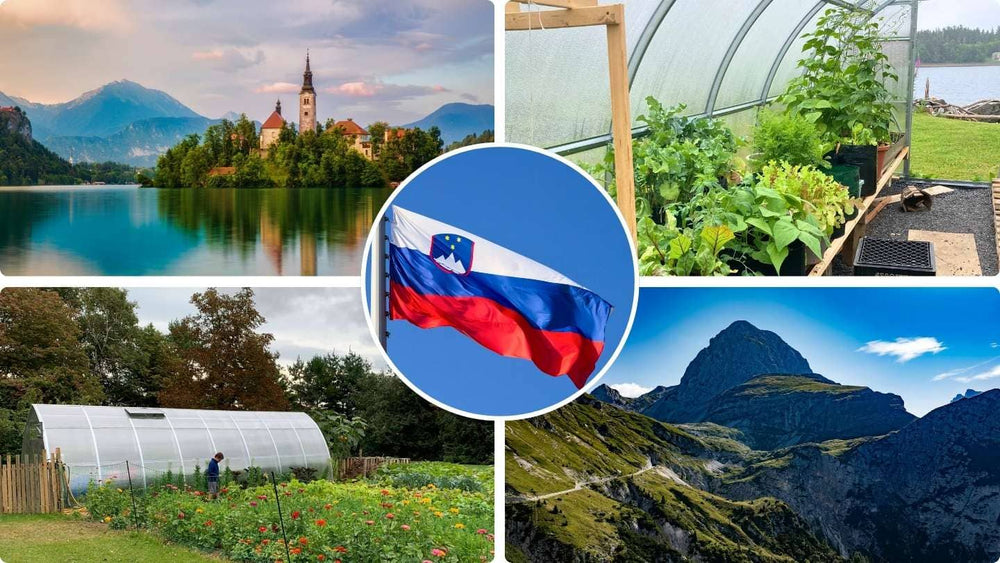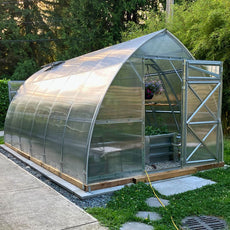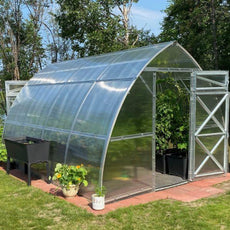In this article, you will learn:
- Characteristics of Slovenia’s Growing Regions
- Challenges of Gardening in Slovenia
- The Benefits of Using a Greenhouse in Slovenia
Slovenia experiences three distinct climatic influences: alpine, continental, and Mediterranean. Winters can be cold, with temperatures dropping as low as -15°C in the Alps, while the coastal areas enjoy milder winters. Summers range from warm to hot, with average temperatures between 20°C and 30°C, providing excellent conditions for growing a wide variety of crops.

Image from Plant Maps
Characteristics of Slovenia’s Growing Regions
Slovenia’s diverse climate contributes to unique gardening conditions across different regions:
- Alpine climate in the north and northwest, with cold winters (-10°C to -15°C) and short growing seasons.
- Continental climate in central and eastern Slovenia, with moderate winters (-5°C to 5°C) and warm summers (25°C to 30°C).
- Mediterranean climate in the southwest, with mild winters (0°C to 10°C) and hot summers (30°C to 35°C).
- Annual precipitation varies, with the northwest experiencing more rainfall, while the coastal areas have drier conditions.
- The growing season ranges from 150 days in alpine areas to over 230 days along the coast.
These climatic differences allow Slovenia to cultivate a wide range of crops but also pose challenges, such as frost in the north and occasional droughts in the south.
Challenges of Growing in Slovenia
Frost and Cold Winters
Alpine and continental regions experience harsh winter temperatures and late spring frosts, which can damage sensitive plants.
Drought in Coastal and Karst Areas
The Mediterranean-influenced regions occasionally suffer from summer droughts, requiring irrigation to sustain crops.
Heavy Rain and Humidity
Some regions experience excessive rainfall, which can lead to soil erosion, fungal diseases, and reduced plant productivity.

The Benefits of Using a Greenhouse in Slovenia
Greenhouses provide Slovenian gardeners with a way to overcome climate-related challenges and enhance their growing potential.
Extend Your Growing Season
- Without a greenhouse:
Outdoor cultivation is limited to April through October in most regions, with alpine areas having an even shorter growing window. Frost and sudden temperature drops can damage crops and shorten yields.
- With a greenhouse:
A greenhouse can extend the growing season from early March to late November, or even allow year-round gardening in mild coastal areas. It provides a controlled environment to protect plants from sudden frosts and excessive rainfall.
Grow a Wider Variety of Vegetables
- Without a greenhouse:
Outdoor gardening in Slovenia is best suited to crops such as:
|
Olives Pomegranates Thyme Figs |
Citrus Grapes Cabbages Apples |
- With a Greenhouse:
A controlled environment allows Slovenian gardeners to successfully cultivate a wider range of crops, including:
|
Tomatoes Peppers Cucumbers Eggplants Zucchini Melons Table grapes Flowers |
Citrus fruits (lemons, oranges, mandarins) Olives Herbs (rosemary, basil, thyme) Figs Exotic fruits such as pomegranates and kiwis |





